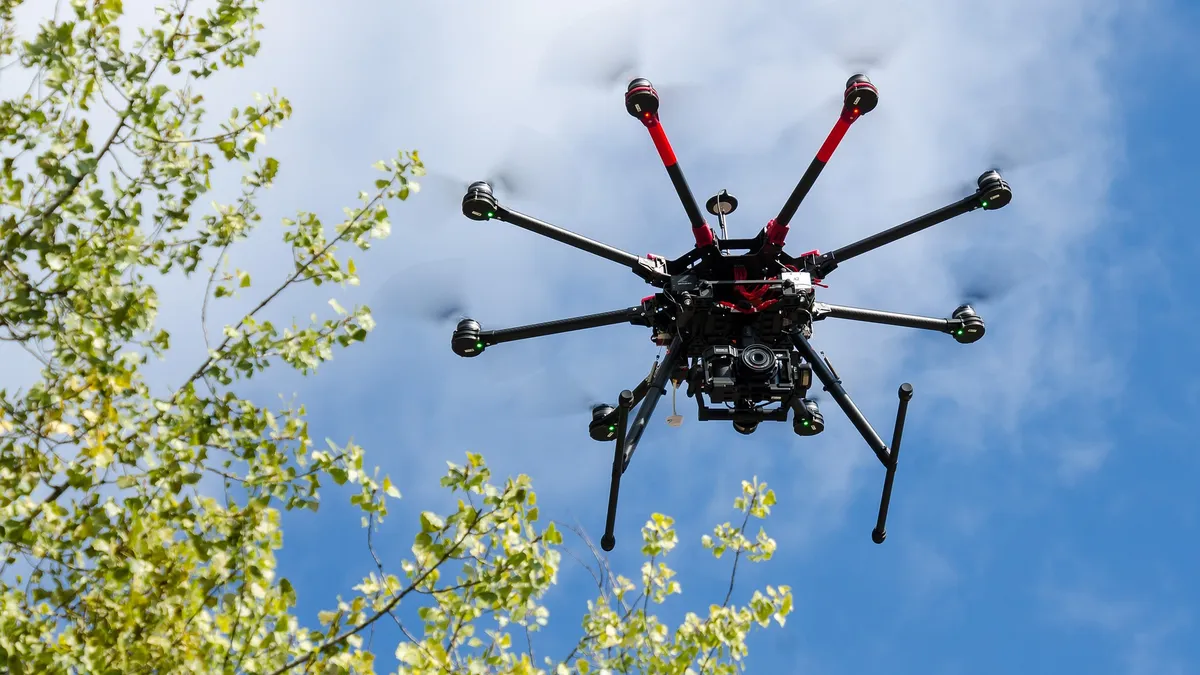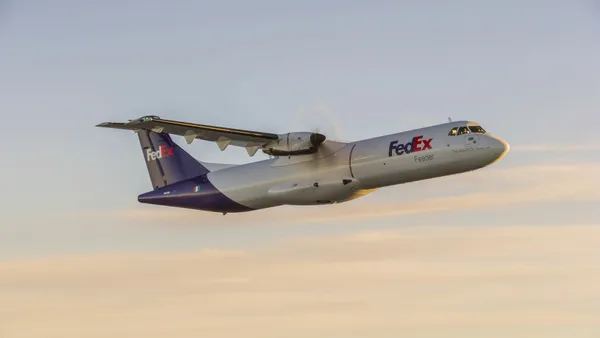Dive Brief:
- In response to flight disruptions due to drone sightings, Gatwick and Heathrow airport officials are spending millions on anti-drone technology to be permanently located at the airports, the BBC reported.
- The U.K.'s Royal Air Force (RAF) deployed similar equipment at Gatwick during the disruption to track and jam communications between the drone and its operator. Gatwick reportedly will spend £5 million ($6.4 million) on a system, and Heathrow has only said it would invest in anti-drone systems.
- More than 140,000 passengers at Gatwick were delayed during 36 hours of disruption Dec. 19-21. Flights at Heathrow were halted for about an hour on Jan. 8 due to another spate of drone sightings. In the U.K., 92 cases of close calls between aircraft and drones were recorded in 2017, according to the BBC.
Dive Insight:
Airports around the world are vulnerable to drone incursions that could snarl passenger and freight traffic for days. Flight operations in Chengdu, China, the United Arab Emirates and Ottawa, Canada, have been disrupted due to drone activity, the New York Times reported.
While there hasn't been a significant incursion in the United States at the same level as the disruption at Gatwick, airport and homeland security officials are preparing for just such an event.
No matter if the drone incursions are deliberate or inadvertent, they represent a danger to aircraft. Tests show that even a small drone of two pounds or so could damage a commercial airliner traveling at landing and takeoff speeds. A collision with a drone would be similar to a bird strike that could damage the aircraft's windshield or engine. The drones carry lithium-ion batteries that carry the risk of fire on impact, according to a BBC report. Also, drones could carry explosives to attack aircraft or other targets.
Regulations in the U.K. limit drones to an altitude of 400 feet and prohibit flying within 1 km of an airport. Rules in the U.S. are similar, with flights also limited to 400 feet and a ban on flying within 5 miles of an airport without Federal Aviation Administration (FAA) clearance. Of course, experts point out that drone pilots with the intent to cause harm won't abide by the regulations.
Tracking drones by radar in an airport environment presents some challenges. Radar systems have trouble tracking drones when they hover, and the flood of radio transmissions makes it hard to pick out the drone transmission from the background noise, Insurance Journal reported.
Security contractors are developing an array of anti-drone devices from radio frequency jamming to weighted nets, which can be carried by another drone or fired from a gun. Major civilian drone makers such as DJI include geo-fencing capabilities that prevent drones from flying in certain areas based on GPS coordinates. More extreme countermeasures such as lasers that burn a hole in the drone could cause unintended damage.












